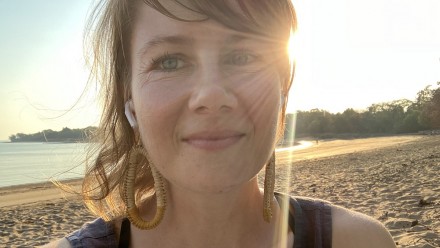Doctor of Medicine & Surgery
The Medicinae ac Chirurgiae Doctoranda (MChD), Latin for Doctor of Medicine and Surgery, is a comprehensive and varied four year course for graduate students looking to enter the rewarding field of medicine. It aims to produce graduates who are committed to compassionate, ethical health care and the expansion of medical knowledge.
What do you study?
The MChD is underpinned by the themes below.
- Medical sciences covers a vast scope of ever changing and expanding knowledge that forms the basis of modern medicine
- Clinical skills ensures the acquisition of knowledge is accompanied by communication skills, the ability to examine patients and critically appraise information
- Population health addresses the relationship between humans, their society and environment
- Professionalism and leadership develops these vital skills of a good doctor
The curriculum is built on important frameworks that explore the social foundations of medicine, develop understanding of the indigenous health context in Australia, and provide insights and experience in health care in rural and/or remote Australian settings. Consistent with the research intensive nature of ANU, our program also develops the research skills of our students.
One of the best aspects of the program is the collegiality between students and staff. In such a close cohort you develop terrific working relationships with your peers and with your teachers. Amongst students, the atmosphere is incredibly supportive - we help each other out in so many ways.
What can you expect?
Years one and two
During the first two years of the course, the curriculum is built around problem based learning (PBL) sessions. PBL sessions are designed to promote creative and analytical thinking through both cooperative and self directed learning.
Each week, students are presented with a PBL case study, working through hypotheses and diagnoses in a scientific manner. The PBL sessions are supported by lectures, practical sessions and a weekly clinical day in one of Canberra’s hospitals. All learning resources are easily accessed through the student-staff web interface, Wattle.
During each of the first two years, students also spend one week in a rural location around Canberra and the south-east region of NSW. In second year, rural week focuses on Indigenous health.
Students also conduct a research project during this time, expanding their knowledge and research skills through collaboration with the world class research teams here at ANU.
Years three and four
From the end of the second year, students spend almost all of their contact hours in the health sector. During this time, they are immersed in all the major medical disciplines through rotations of four or more weeks.
The ANU Medical School Canberra Hospital campus is the principal teaching location. Its facilities are complemented by those of Calvary Public Hospital.
During third year, students again venture into the rural clinical realm, this time for six weeks. Students enrolled in the rural stream will spend their entire third year as an active members of a rural community.
At the beginning of fourth year, students undertake an elective term of four or more weeks at a worldwide location of their choice. The main objective of this term is to broaden students' clinical horizons beyond the established curriculum and to gain personal life experience.










